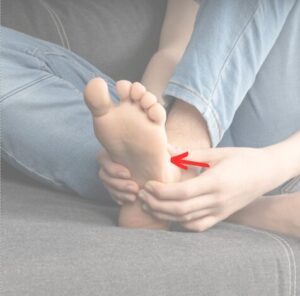Ouch! What Happens When You Roll Your Ankle?
It’s funny isn’t it how our feet seem to be so good at finding those hidden holes when outside? However the joke is on us when we find out how much it hurts when you innocently roll an ankle playing a spirited game of tennis or simply were just hurrying down the stairs.
Ankle injuries vary from a variety of different sprains and fractures, and while the simplest of sprains happen to almost everyone, knowing a few facts can help you recover faster and more importantly to prevent them from ideally…ever coming back!
How we advise you to treat a ‘Basic’ Sprained Ankle
While all ankle injuries hurt, if you attempt to stand and have extremely sharp pain, stop. Sit back and don’t try to ‘walk it off’. POLICE – is an acronym we use to apply the basic treatment protocol:
- Protection:During the first few days after an injury, you should rest the injured joint, ligament, or muscle. After that, you can start gentle motion while still maintaining some protection of the injured area.
- Optimum Loading: This describes the gentle motion you can start while in the Protection phase. For example, after an ankle injury you should be able to progress from a few days of rest to passive range-of-motion (ROM) movement, active ROM and finally ankle strengthening exercises.
- Ice: Applying ice may help to manage the swelling around your injured muscle or joint, and ice can help decrease some of the acute pain that you may be experiencing.
- Compression: While applying ice, you can add compression with a bandage. You can also use a variety of tape products even ice tape products which….also compress the injury at the same time
- Elevation:Elevation is simple for some body parts. An injured ankle can be placed on a stack of pillows while you are lying down.
Tips to Avoid Ankle Injuries
The biggest issue? Is stabilising a now likely…unstable ankle and the last thing we want for you is a chronic recurrent unstable ankle for life.
- Work on balance training: Easy exercises, such as balancing on one foot, can help you improve your equilibrium. Try brushing your teeth on one foot; it’s an easy way to make your ankles stronger. Look at purchasing a rocker or wobble board (we these and the new ish hoka, on cloud or ascics high top trainers).
- Reinforce your muscles:Take plenty of walks, or try a simple exercise, such as using a towel as resistance. Just work on it regularly and move your foot against the towel, up, down, in and out.
- Protect yourself:Use tape or a brace if you’re planning more aggressive activity.
- You can’t over-prepare:If you’re a ‘weekend warrior’ and haven’t done much running or jumping in a while, give yourself time to get up to “near-game” or “real-game” speed before you go all out.
A gradual build-up to the level of activity you wish to attain is smart.
Are you experiencing this condition? One of our podiatrist can assist and recommend what treatment options are best to get you back on track. ✅
Schedule an appointment here or you may call us at 44 (0) 207 101 4000. 📞
We hope you have a feetastic day! 👣☀️
-The Chelsea Clinic and Team



